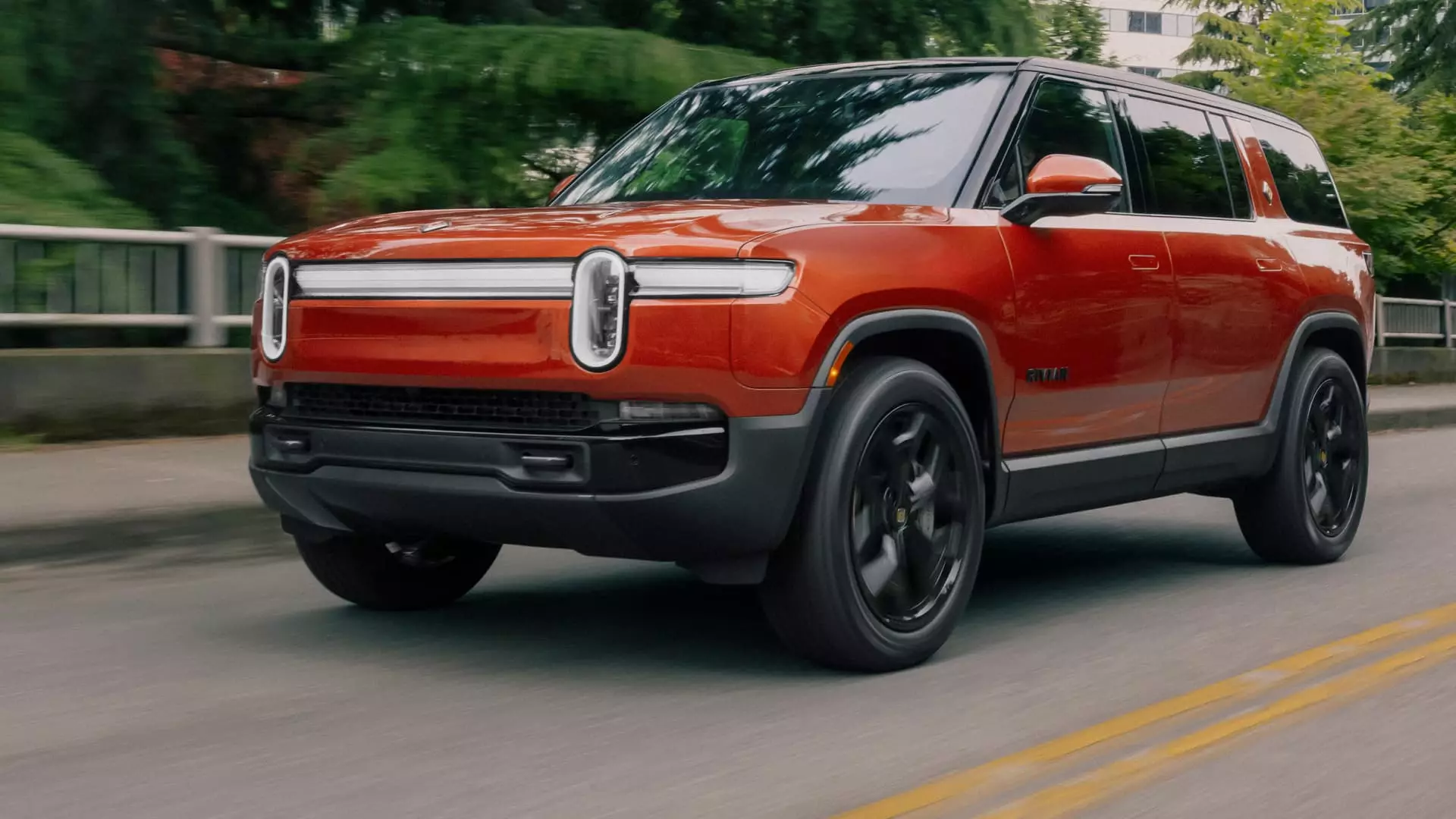Rivian Automotive has recently made headlines by surpassing Wall Street’s projections for its fourth-quarter earnings. This accomplishment marks a noteworthy milestone for the electric vehicle (EV) manufacturer, as it has achieved its first gross quarterly profit. However, the company has also issued forecasts that point to a complicated road ahead, particularly regarding sales expectations for 2025. This piece aims to dissect these developments and contextualize them within broader market dynamics and company strategies.
Rivian’s gross profit of $170 million in the last quarter of the previous year stands out against a backdrop of uncertainty prevalent in the automotive industry. With increased competition from both established automakers and new entrants in the EV space, Rivian has had to navigate a labyrinth of challenges ranging from supply chain issues to changing consumer preferences. Additionally, alterations to government incentives for electric vehicles loom large, creating a potential barrier that could influence future demand. Rivian’s CEO, RJ Scaringe, has openly noted these uncertainties, emphasizing the potential for regulatory changes and other external factors to impact their production and sales forecasts.
The forecast for 2025 predicts a decline in total units delivered, with expectations set between 46,000 and 51,000 vehicles compared to last year’s 51,579 deliveries. While the drop appears moderate, it raises questions about Rivian’s market positioning and its ability to compete effectively. This situation reflects the inherent volatility in the EV sector, where companies must constantly adapt to fluctuating consumer demands and regulatory environments.
Despite achieving a gross profit, Rivian is not declaring victory. The company anticipates narrowing its adjusted losses to a range of $1.7 billion to $1.9 billion for 2025 compared to a staggering loss of $2.69 billion in 2024. This projection indicates a cautious approach rather than unrestrained optimism. Rivian has opted not to provide a timeline for achieving profitability on a net income basis, which might concern investors seeking clearer indicators of financial stability.
During the company’s earnings call, Rivian’s Chief Financial Officer, Claire McDonough, elaborated on expected capital expenditures of between $1.6 billion and $1.7 billion for the year, an increase from $1.41 billion in 2024. This uptick is indicative of Rivian’s investment in its future, particularly as it prepares to launch the new “R2” midsize vehicles anticipated in 2026. Yet, this strategy carries inherent risks, especially as it necessitates idling its sole manufacturing facility during the latter half of the year for retooling. Such decisions necessitate adept management to mitigate any resultant disruptions in production and sales momentum.
In a landscape increasingly dominated by innovations, Rivian is also focusing on diversifying its revenue streams beyond just vehicle sales. With plans to grow its software business, including a joint venture with Volkswagen, the company aims to bolster its financial foundation. The sale of regulatory credits has provided a temporary boon, contributing approximately $299 million to its fourth-quarter gross profits. However, reliance on such revenue streams raises questions regarding sustainability, especially if regulatory landscapes change under shifting administrations.
Nonetheless, Rivian’s fourth-quarter results demonstrated promising growth, with revenue surging by more than 31% year-over-year, amounting to $1.73 billion against an expected $1.4 billion. This performance reflects not just resilience but also Rivian’s ability to harness demand even amidst a turbulent market environment.
Rivian Automotive stands at a crossroads amidst both achievements and looming challenges. While it has successfully navigated the initial hurdles of establishing itself within the EV market by achieving a gross profit, the forecast for declining vehicle sales in 2025 and the unpredictable nature of regulatory influences present serious concerns. The company’s strategic investments in new vehicle models and software integration showcase a commitment to long-term growth. However, investors and stakeholders will need to remain vigilant as Rivian maneuvers through the complexities of a rapidly evolving automotive landscape.

